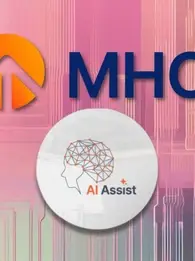
The Future of Industry 5.0: Human-AI Collaboration
With the progress of industries, there comes a new stage from Industry 4.0 to Industry 5.0, which symbolizes a change in the way human and machine collaboration will look like. Contrary to the previous one that focused on automation, smart systems, and data exchange, the latter awaits peaceful collaboration between humans and machines. Instead of replacing human jobs by artificial means, it augments human creativity and productivity through collaboration.
This shift is paramount, especially for fears of AI taking up many jobs. However, AI allows new forms of work, fosters new kinds of jobs, and makes corporations more efficient at work. The next step in the history of industry is to balance human creativity with machine precision.
The Cost and Challenges of AI Implementation
Adopting AI technologies presents significant challenges for businesses, particularly in terms of cost and ongoing maintenance. While tools like ChatGPT offer benefits, they are not always sufficient for addressing complex business needs, and companies must invest in both the human and computational resources to develop and maintain these systems.
Sergey Kastukevich, Deputy CTO at SOFTSWISS, shares his thoughts on these challenges:
"Adopting AI technologies presents several challenges, particularly in terms of cost and ongoing maintenance. While tools like ChatGPT offer benefits, they may not be sufficient for addressing complex business problems. Implementing AI involves two key financial aspects: the cost for qualified employees to develop and maintain it and the cost of computational resources. The development phase can be expensive, as it requires skilled Data Science and Machine Learning professionals who are in high demand and command premium salaries. Additionally, once the AI system is in place, ongoing support is crucial. AI models must be regularly updated and retrained with new data to stay relevant and effective as market conditions evolve. Without consistent review and refinement, even the most sophisticated models can quickly become outdated.
Creating a one-size-fits-all solution is challenging, as AI systems need frequent adjustments to address changing business needs. In a rapidly shifting environment, expecting an AI system to remain profitable without updates is unrealistic.
AI adoption also entails significant costs related to computational resources, especially when scaling up through cloud solutions. More complex AI implementations require greater investment in computing power to maintain performance at scale.
That's why it's important to investigate the AI solutions available on the market and avoid reinventing the wheel.
Ultimately, businesses must carefully weigh the benefits of AI against the costs of development, deployment, and maintenance. Strategic planning is essential to maximize the return on investment and effectively leverage AI for business growth."
The Future of AI in Professional Workflows
The integration of AI into the workforce is not just about automation but about creating a partnership between machines and humans. This collaboration allows AI to handle routine and repetitive tasks, while professionals can focus on more creative and strategic work. In doing so, AI helps expand productivity and unlocks new possibilities across various industries.
Roman Kyrychenko, Data Scientist at SoftTeco, offers his perspective on the development of AI and its cost dynamics:
"The main challenge, in my opinion, is the bubble nature of the latest growth in the AI industry. The innovation behind LLMs was invented and published more than five years ago, although the hype is only two years old. The success of the latest models relies on a larger scale of data and computational power, making it an extensive way of progressing.
Extensive means the cost of the model is very high, but companies sell it at a low price to attract more customers. So, there are two paths for development: they either manage to reduce the cost of the model or they will fail. For users of AI services, it is also risky because they might be left without support in the future. Therefore, it is important to choose the right company to work with."
Human-Machine Collaboration in Industry 5.0
As we move towards Industry 5.0, AI will play a vital role in enhancing human capabilities rather than replacing them. This new stage of industrial development emphasizes the synergy between human creativity and machine efficiency, allowing businesses to streamline processes and foster innovation.
Sergey Kastukevich elaborates on how SOFTSWISS is integrating AI to complement human work:
"We provide our developers with new tools that streamline the coding process, making it easier and more efficient. This approach frees up their time, allowing them to focus on more creative and complex tasks. By automating routine work, we enable our team to concentrate on higher-value activities and pursue more innovative projects. We have also included proficiency in AI tools as a hard skill requirement for our company and as part of the skill matrix in our onboarding process.
Implementing AI tools is a must if a company wants to stay competitive. The world is accelerating, and it’s no longer feasible to work on a single algorithm for an extended period. The challenges can arise when not all employees understand the value of these tools or are willing to learn something new, stepping outside their comfort zones.
At SOFTSWISS, we addressed this by focusing on the enthusiasts within our team who were eager to implement AI in their workflow. When they experienced its effectiveness in working with code, we encouraged them to share their insights and experiences with other teams. This way, we didn't impose the tool but promoted it!
We actively encourage employees to suggest new tools for use. Once a tool is proposed, it undergoes a review by the cybersecurity department to ensure it is safe for use."
Roman Kyrychenko reflects on the role of AI in the software development industry:
"Software development is a highly creative job, though it follows strict rules. From my experience with AI tools in software development, I've observed that while the main source of creativity is still human, AI can automate many tasks, especially the tedious and basic ones that often consume senior developers' time. This AI automation allows them to focus on more interesting and complex challenges.
In my DA/ML department at SoftTeco, we've noticed that junior developers are the primary group affected by AI automation. It has become much harder to find projects suited for entry-level specialists. As a result, the entry threshold for new IT professionals is rising due to AI automating many development tasks. However, senior developers are benefiting from these tools.
Therefore, companies and professionals need to adapt to this new reality, where AI tools significantly contribute to their work."
The Future of Human-Machine Synergy
As Industry 5.0 unfolds, it is clear that the collaboration between AI and humans will define the next wave of industrial growth. This partnership promises not only efficiency but also creativity, enabling businesses to innovate while maintaining a human touch in their operations.










